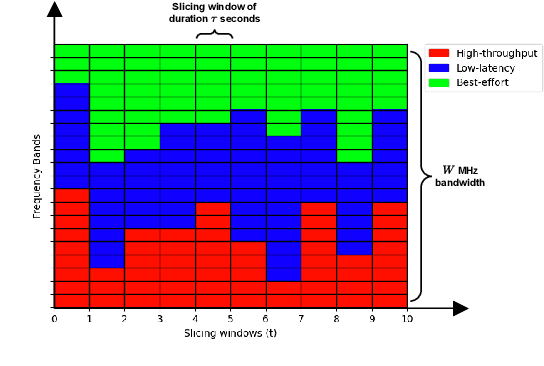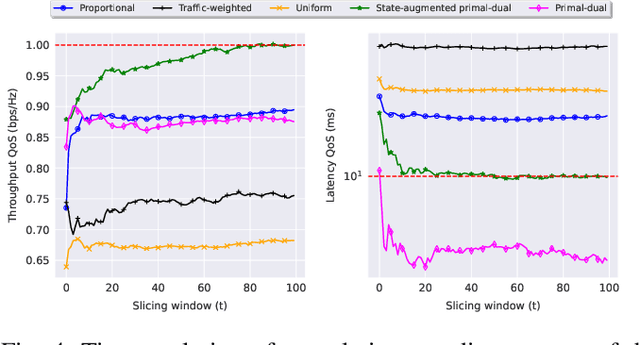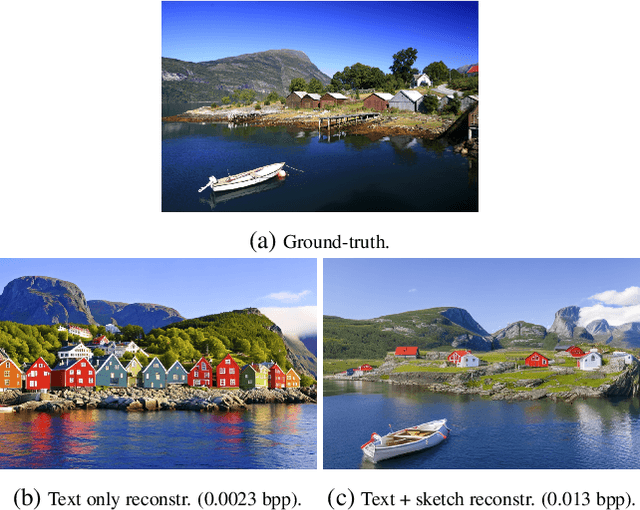Yiğit Berkay Uslu
University of Pennsylvania
Learning to Slice Wi-Fi Networks: A State-Augmented Primal-Dual Approach
May 09, 2024



Abstract:Network slicing is a key feature in 5G/NG cellular networks that creates customized slices for different service types with various quality-of-service (QoS) requirements, which can achieve service differentiation and guarantee service-level agreement (SLA) for each service type. In Wi-Fi networks, there is limited prior work on slicing, and a potential solution is based on a multi-tenant architecture on a single access point (AP) that dedicates different channels to different slices. In this paper, we define a flexible, constrained learning framework to enable slicing in Wi-Fi networks subject to QoS requirements. We specifically propose an unsupervised learning-based network slicing method that leverages a state-augmented primal-dual algorithm, where a neural network policy is trained offline to optimize a Lagrangian function and the dual variable dynamics are updated online in the execution phase. We show that state augmentation is crucial for generating slicing decisions that meet the ergodic QoS requirements.
Text + Sketch: Image Compression at Ultra Low Rates
Jul 04, 2023



Abstract:Recent advances in text-to-image generative models provide the ability to generate high-quality images from short text descriptions. These foundation models, when pre-trained on billion-scale datasets, are effective for various downstream tasks with little or no further training. A natural question to ask is how such models may be adapted for image compression. We investigate several techniques in which the pre-trained models can be directly used to implement compression schemes targeting novel low rate regimes. We show how text descriptions can be used in conjunction with side information to generate high-fidelity reconstructions that preserve both semantics and spatial structure of the original. We demonstrate that at very low bit-rates, our method can significantly improve upon learned compressors in terms of perceptual and semantic fidelity, despite no end-to-end training.
A State-Augmented Approach for Learning Optimal Resource Management Decisions in Wireless Networks
Nov 09, 2022

Abstract:We consider a radio resource management (RRM) problem in a multi-user wireless network, where the goal is to optimize a network-wide utility function subject to constraints on the ergodic average performance of users. We propose a state-augmented parameterization for the RRM policy, where alongside the instantaneous network states, the RRM policy takes as input the set of dual variables corresponding to the constraints. We provide theoretical justification for the feasibility and near-optimality of the RRM decisions generated by the proposed state-augmented algorithm. Focusing on the power allocation problem with RRM policies parameterized by a graph neural network (GNN) and dual variables sampled from the dual descent dynamics, we numerically demonstrate that the proposed approach achieves a superior trade-off between mean, minimum, and 5th percentile rates than baseline methods.
 Add to Chrome
Add to Chrome Add to Firefox
Add to Firefox Add to Edge
Add to Edge